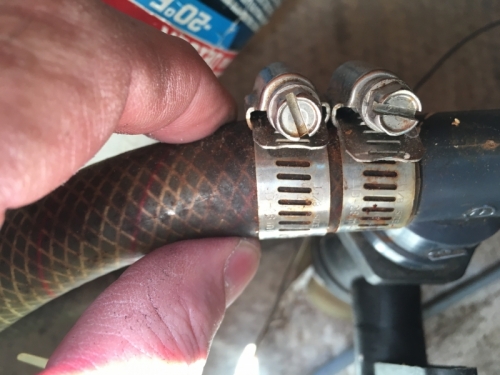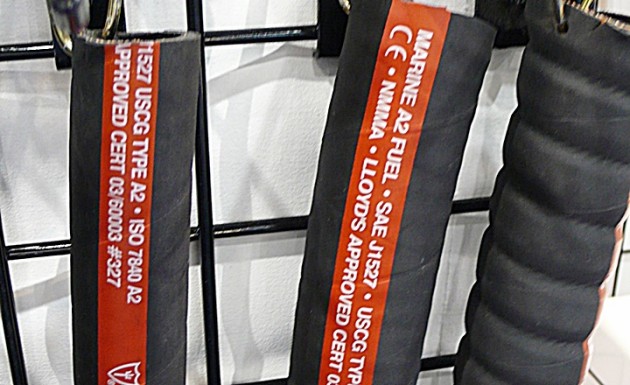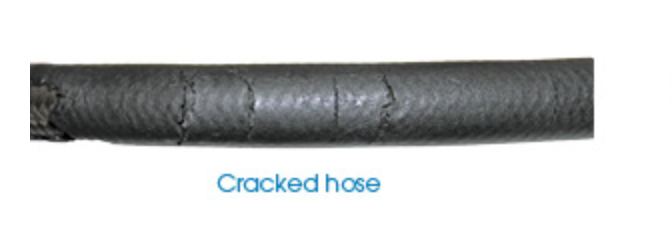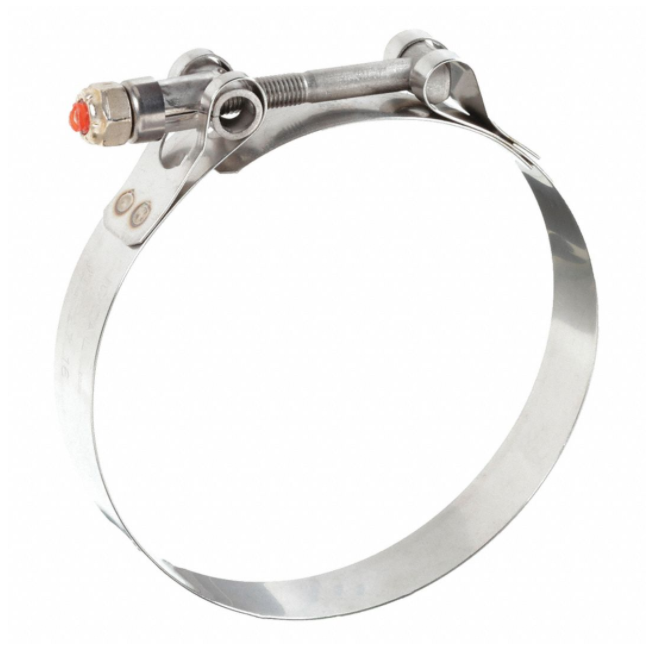Check Clamps and Hoses
Hard slams and big bangs are conditions every mariner endures in rough seas—hopefully, it doesn’t take long to get to calmer cruising waters. However, while crew and passengers wrestle for stability, it’s a war down in the engine room. The constant vibration, high heat, and hard knocks loosen hoses, clamps, belts, and screws and equipment can fail. That’s why you need to check your clamps and hoses often.
Vigilance and repair can keep your boat’s engine running at peak performance. Keeping a close eye on your hoses and clamps is a good place to start. By inspecting these important connections on a regular basis—at least twice a year—you’ll make sure they are secure and keep the fluids circulating through the system and not into the engine room.
Cues to Use
“Look for visual clues that may indicate replacement is needed,” explains Mike Crites, senior product category manager, Shields Marine Hose at SeaStar Solutions. “Cracking, signs of leakage, bubbling up of the hose exterior, hose clamps digging into the hose layers, these are some of the most obvious ways to visually inspect.”
Because many hoses are equipped with a barrier layer that prevents chafing and abrasion of the hose’s internal layers, you can spot a potential problem before it starts leaking. Pay close attention to hoses in contact with other pieces of machinery for signs the barrier layer is being worn or damaged.
In general, hoses are considered “flexible” connections between two points. If a hose is rigid and appears to be brittle, it may be time to replace it. Also, most hoses have a date code in the imprinted line identifying the product. Material specifications can vary but pay attention to hoses with date codes older than seven years.
“Bottom line, if you question it, replace it,” Crites says. “Hoses are often overlooked and can easily sink a boat or create a hazardous situation. Proper selection, routing and inspection will prolong hose life and create a safe operating environment.”
Choosing the right type of replacement hose takes a bit of work. Don’t assume the old hose you need to replace was the right one for the job. “One rule applies: Match the hose to the application,” says Crites. “Never assume the guy before you knew what he was doing and installed the correct product. With new regulations always entering the industry, you want to be sure you are replacing with the most current and compliant product. It is the installer’s responsibility to know the applicable requirements and regulations.”
Words of Advice
- Crites offers some advice and key questions to ask when it comes to hose replacement:
- Is this application above or below the water line?
- For a fuel hose, what type of fuel is it? Will fuel sit in the hose when not in use, or is this just a fill or tank-venting application?
- Are there pressure or vacuum requirements for the application?
- Do I need hose made from FDA-approved materials for potable and food applications?
- For gasoline applications, are the lines certified to the latest low-permeation requirements?
- Does the hose need to be Lloyds of London certified?
- Is this a commercial vessel that can have unique hose requirements for U.S. Coast Guard inspection?
- For sanitation hose, look at the difficulty in routing the hose and where the hose routing runs, such as under a cabin berth. If it’s difficult, spend the money on an ultra-low odor or odor-free hose. It’s worth the additional cost and your nose will thank you in the long run.
- For clamps, 316-grade stainless steel is a top choice according to the ABYC standards under the P1 Exhaust Systems specification.
“ABYC says when connecting flexible exhaust hose to another engine component, the hose clamps need to be a minimum of a half-inch in width, made entirely of stainless steel. Clamps that rely solely on spring tension cannot be used,” says Crites. “Materials must also be resistant to saltwater corrosion along with not creating a source for galvanic corrosion. Because of its location on the galvanic table for sea water, 316 stainless clamps are very passive and are an excellent choice for the engine room.”
Clamp and Hose Misconceptions
Misconception #1
“If it ain’t broke, don’t fix it.” Clamps require regular inspection. Check for signs of corrosion, loose clamps or over tightened clamps that could be cutting into the hose and be a future source of a failure or leak.
Misconception #2
“Any hose clamp will do.” Not true. Most people assume that hose clamps provide a 360-degree seal onto the hose. Some do, but many do not, and because of that, be sure you are utilizing the correct material, size and style of clamp for your application. For example, T-Bolt clamps provide a uniform, even seal and are an excellent choice for high-vibration, large-diameter hose applications like the exhaust system. The common worm-gear style clamp is good for low pressure, general connections, but do not provide 360-degree clamping pressure. Knowing the application and the requirements is key.
Misconception #3
“I checked and there was no leak.” Many times, a single hose clamp may provide a non-leak seal; however, the USCG, ABYC, NMMA, or SAE may have requirements or recommendations for the use of two hose clamps per connection end. In cases where two hose clamps are required, the tightening point on the clamps should be 180 degrees opposite to provide the best sealing method.




